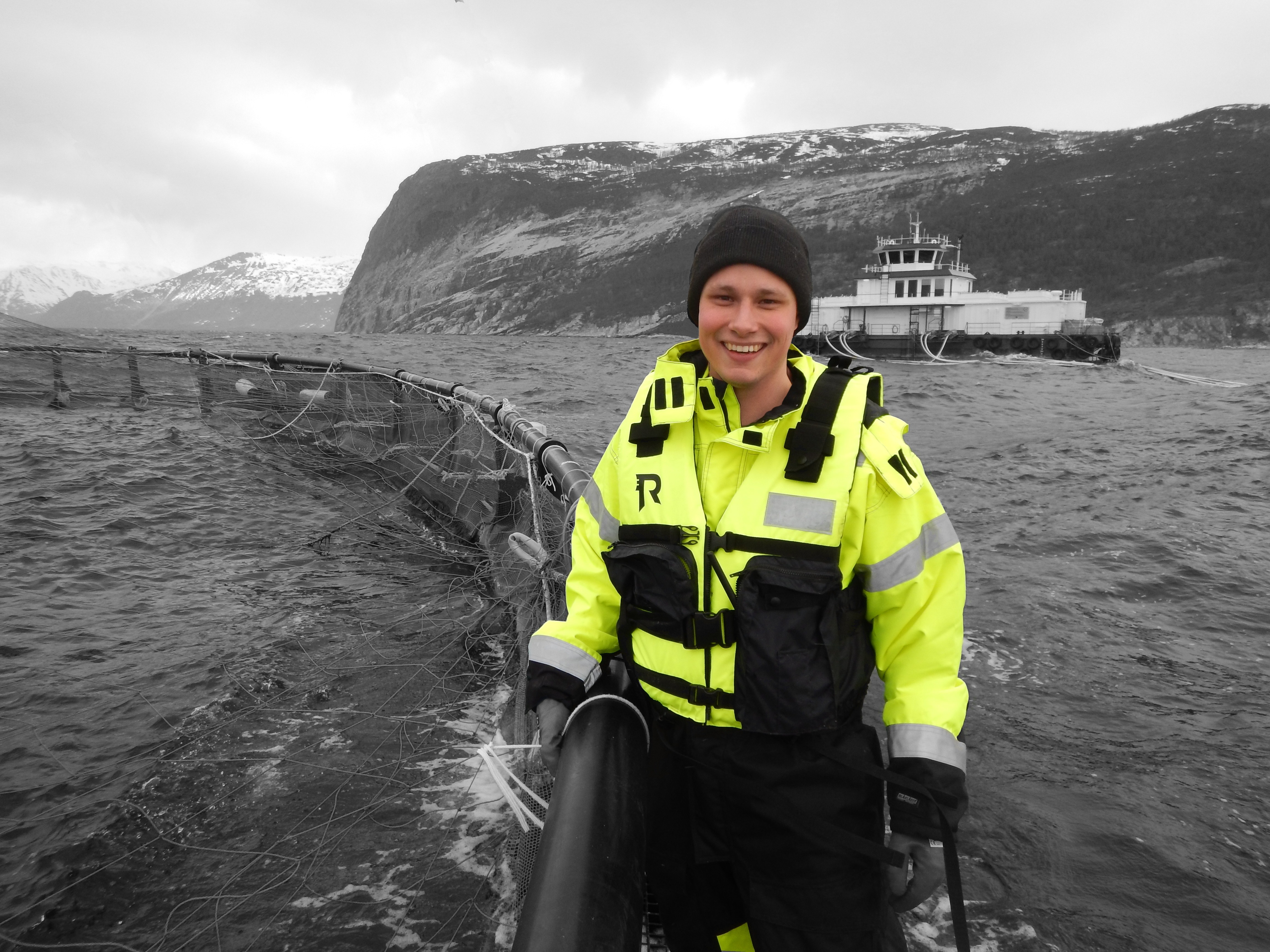Norwegian feed optimization technology startup CageEye has raised an undisclosed round of funding from Dutch seafood-focused venture capital fund Aqua-Spark.
CageEye’s echo-sounder technology uses software and hardware to track acoustic data in a fish cage while relying on machine learning to measure and analyze biomass movements. This enables farmers to make informed decisions about the welfare of their fish while automating and optimizing common chores like feeding.
For instance, the technology can detect where in a fish cage farmed salmon are located at any given time. If the majority of fish are swimming near the surface, it indicates it is ready to feed, while if most of the fish are swimming lower, it is time to reduce the amount of feed distributed to reduce waste and therefore costs.
“We do behavioral analysis of salmon and measure the appetite of the fish, essentially,” CageEye CEO Bendik S. Søvegjarto told AgFunderNews. “We combine this with environmental data that we get onsight or through our models and we create a tool for the farmer to make informed decisions about when to stop feeding, for example. This problem is currently addressed by watching a wall of screens and trying to assess what is happening in the cage through subjective assessments and a limited field of view. With our technology, we can see the whole feeding area.”
Existing pellet detection technology, which measures the number of feed pellets floating in the tank, is also inaccurate. Although floating pellets may indicate that the fish are full or not hungry, the detector can’t always get an accurate read on how many pellets are in the tank due to limits in vision or water currents.
CageEye & Investors
CageEye has now raised a total of €5.3 million ($6 million) since 2026 when it launched its first commercial product, including closing a round earlier this year with Breed Reply, a European operational investor for early-stage businesses in the IoT world.
Aqua-Spark’s singular focus on seafood and a clear commitment to sustainability were additional draws for the CageEye team; the global investment fund is focused on startups in the seafood and aquaculture sector that have the potential to help grow the space while achieving a high level of sustainability.
“We were contacted by Aqua-Spark. All of our rounds have been external contacts. We have never actively contacted anyone,” said Søvegjarto. “We had a lot of interested parties, so we were in the lucky position of being able to cherry pick the ones we wanted to work with. We want owners with longterm interest who have active involvement in the company, and owners who have a lot of competence. Aqua-Spark fit those criteria.”
CageEye’s feed efficiency solution is designed in part to decrease current reliance on fishmeal and fish oil as feed ingredients in the seafood farming sector. Feed also constitutes the single biggest input cost for almost any aquaculture operation, which means that inexact feeding regimens can result in significant losses, higher feed conversion ratios, and slower growth.
Søvegjarto says that the company is taking a selective approach to signing clients the same way it was able to cherry pick investors. To take advantage of its technology, a fish farming operation must sign a three-year lease that covers all of the cages in the operation. CageEye is currently focusing its efforts on gaining control of the salmon industry in Norway before expanding to other regions, but global expansion is definitely on its future radar.
Aqua-Spark Insight
“In an ideal world, the aquaculture industry will need to triple by mid-century. We want to help develop the next two-thirds of the industry and to influence how it grows around the globe,” Mike Velings, founder and managing partner at Aqua-Spark, told AgFunderNews. “We exist for the sole purpose of showing that you can have healthy, affordable, and sustainable aquaculture compared to traditional methods with the same or even better returns.”
Launched in 2015, the investment firm hopes to make 60-80 investments by 2030. So far, it has made 22 investments in 14 companies. CageEye caught Aqua-Spark’s eye due to its focus on increasing resource efficiency during feeding. The firm has also invested in eFishery, an automated sensor-based pond feeding system operating in Indonesia, a few years ago.
Aqua-Spark takes a long-term approach to its investments as opposed to aiming to recoup its investment in six-to-eight years like many other VCs. According to Velings, they can stay invested in a company indefinitely.
As for criteria, Aqua-Spark seeks companies that have a synergy with its existing portfolio, which includes feed ingredients, farming operations, health and disease startups, and more. They track 1,300 companies of interest across the aquaculture value chain to help them understand the space and to identify new opportunities for investment as it continues to develop.
It also recently invested in aquaculture-focused startup accelerator Hatch launched by Carsten Krome of Alimentos Ventures. The founder developed the idea for the accelerator while working at Aqua-Spark and seeing the need for the many new aquaculture startups to become investment ready.
Other big agriculture industry players are making moves in the aquaculture technology space, with Cargill launching a new digital platform for shrimp farmers in March 2018. Unsurprisingly, Velings is seeing a major influx of entrepreneurs and tech talent flocking to the space.
“We see some really exciting young talent coming into the space that we might not have otherwise seen five years ago. We are also seeing a tendency toward more land-based farming as well as open-water farming in closed systems that are more biosecure than what we have seen in the past. There’s just a lot more tech-based attention to the space in general.”




